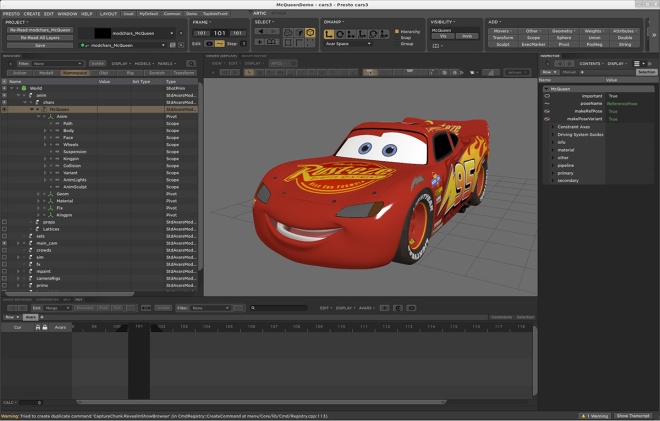
One of the featured sessions at SIGGRAPH Asia in Bangkok (27-30 November) is How Real-Time Graphics Helps Pixar Make Feature Films, being presented by senior graphics software engineers David Yu and Pol Jeremias-Vila.
I got the chance to ask them a few quick questions about what real-time graphics and effects initiatives are in use at Pixar, and what their talk will involve at SIGGRAPH Asia.
vfxblog: What’s your role at Pixar and what does that involve on a day to day basis?
We are part of the Studio Tools department at Pixar which is responsible for much of the core technology development at the Studio, including the Presto animation system, the Hydra render engine (part of the Universal Scene Description frameworks), and OpenSubdiv.
One of the great things about being at Pixar is getting the chance to develop technology alongside an amazing team of animators and technical artists. So, an important part of our day is understanding the technical challenges that come along with each of our films and working to find ways to improve our existing software as well as help develop solutions for new problems.
vfxblog: What tools or areas of production at Pixar involves real-time graphics?
Real-time graphics technology has been in use at Pixar since the earliest days of the Studio, and with each iteration of our technology we continue to find new applications. All of our core departments use real-time graphics in one way or another, from building shots and camera performances in the Layout department, adding detail to our environments in the Sets department, creating emotional performances in Animation, and adding visual richness with Shading, Lighting, and Effects work.
Our Hydra real-time render engine and Universal Scene Description technology are part of the pipeline that connects these various departments together.
vfxblog: What is the benefit of using real-time graphics in making films at Pixar?
Making one of our films involves finding ways to make a tremendous number of creative decisions. We have found that using real-time graphics is a powerful way to help our artists work in context and more confidently and and quickly explore ideas. We strive to build tools that allow our artists to be more expressive as well as more efficient.
vfxblog: What are the challenges in pushing for real-time graphics in production? What are some of the recent advancements Pixar has developed to help overcome these challenges?
Everything about our scenes is complex, from a geometry standpoint to lighting to shading. We have recently introduced the idea of Hydra backends, which enables our tools to swap from one renderer to another one. These are the building blocks to enable us to swap from a preview render made with rasterization (for example, via OpenGL) to a preview render made with a GPU path tracer.
vfxblog: Can you briefly outline what you’ll be talking about at SIGGRAPH Asia?
We will be talking about the different uses of real-time graphics at Pixar. We will also present some of the work that Pixar has done to share much of this technology as open source. We believe that an ecosystem of powerful and robust tools is a benefit to the rest of the industry as well as Pixar.
Remember, vfxblog readers can sign up to SIGGRAPH Asia in Bangkok with a 10% discount. Head to http://bit.ly/sa17reg and use the code EP107010MS71.

Post a Comment